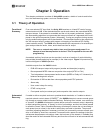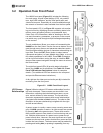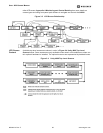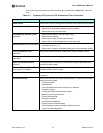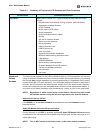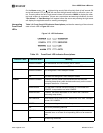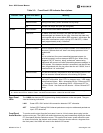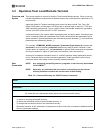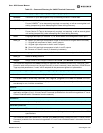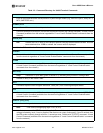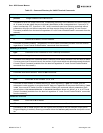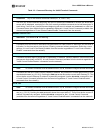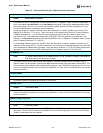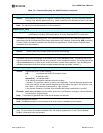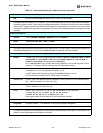
UNITY 4600 USER’S MANUAL
www.wegener.com 31 800032-01 Rev.F
3.3 Operation from Local/Remote Terminal
Overview and
Syntax
This section applies to control by both the Terminal and Modem devices. Once a user has
fulfilled the password requirement for Modem access, the communication is identical to Ter-
minal control.
Approved clients for Terminal monitoring and control via telnet include Tera Term, Win-
dows
2000 telnet, and Windows
XP telnet and no special login is required. VT100 and
ANSI terminals are approved. To exit, use the client’s exit/escape sequence or get debug
access in the IRD to use the QUIT or EXIT command.
Commands listed in this section detail command syntax and action taken. Commands con-
sist of a command field and a parameter field. Each command field and parameter field is
space delimited. Optional parameters are indicated by square brackets, [ ], and conditional
parameters are indicated by braces, {}.
For example, COMMAND_NAME parameter1 {parameter2} [parameter3] indicates that
parameter1 must be entered, parameter2 entered only when a certain condition is met
(certain option is installed, etc.), and parameter3 is optional. Both commands and parame-
ters may be entered in upper or lower case; the interface is not case-sensitive.
Incorrect or incomplete commands result in "Invalid Command" being displayed at the ter-
minal. Parameter errors on User commands generate "Invalid parameter name" where
parameter name is the name of the incorrectly entered parameter.
User
Commands
NOTE: Any commands controlling carriers, programs, or services may be disabled
from COMPEL
..
NOTE: Generally, any command that can control a unit setting may be entered
without parameters to show the current value of that setting.
Table 3.3: Command Directory for U4600 Terminal Commands
ABORT
Insert is terminated. See TEMP command.
ABORTREC x
x: C - make the unit’s permanent setting equal to the last commanded setting
S - make the unit’s permanent setting equal to the last successful setting
Command either
1) aborts an ongoing automated recovery;
2) aborts the successful results of an automated recovery; or
3) accepts the successful results of an automated recovery.
With either value for x, this command is interpreted as a direct local user command to establish/confirm
the unit’s permanent settings.



